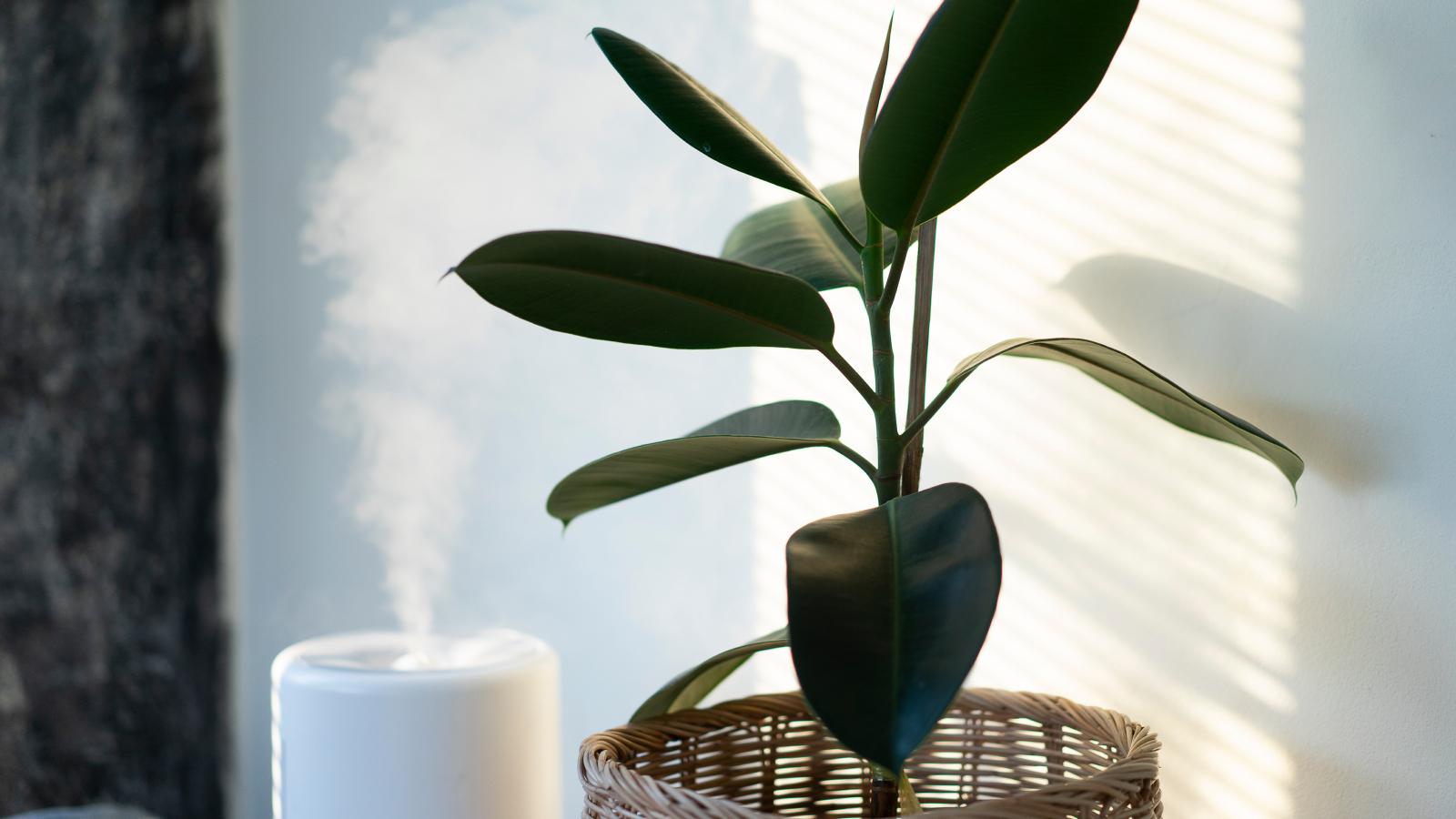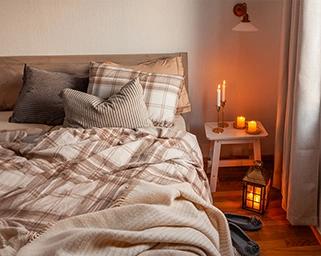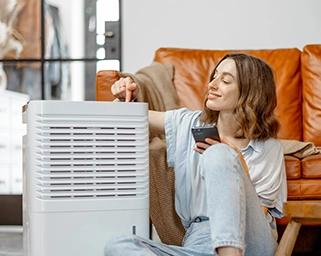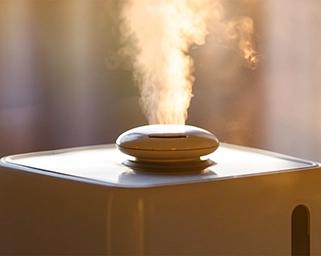How to Change Indoor Humidity Levels
Explore quick and easy ways to achieve the ideal indoor humidity.
Indoor humidity plays a crucial role in maintaining a comfortable and healthy living environment. From preventing mold growth to ensuring optimal respiratory health, controlling indoor humidity is key. In this comprehensive guide, we will delve into the factors influencing indoor humidity levels, the ideal humidity range, and practical strategies on how to adjust humidity to create a balanced and comfortable atmosphere within your home.
What is humidity?
Before discussing how to lower humidity in your house or raise it, it's essential to understand what humidity is and why it matters. Humidity refers to the amount of water vapor present in the air. It is a critical factor in determining the comfort, health, and overall well-being of indoor environments.
Humidity levels are typically measured as a percentage, representing the ratio of the actual amount of water vapor present in the air to the maximum amount the air can hold at a given temperature.
What is high humidity?
High humidity in HVAC refers to a situation where the indoor relative humidity levels are elevated beyond the desired or comfortable range. Anything above 60% humidity is considered high humidity.
High humidity levels can lead to discomfort, reduced indoor air quality, and potential issues such as mold growth and condensation. It can make the indoor environment feel sticky, cause musty odors, promote the proliferation of allergens, and even impact the efficiency of cooling systems.
What should the humidity be in my house?
Maintaining the right indoor humidity is crucial for both comfort and health. The Environmental Protection Agency (EPA) says a safe and comfortable humidity level falls between 30-50%. This 30/50 humidity level range helps prevent issues such as mold growth, dust mites, and respiratory discomfort.
However, the ideal home humidity level changes with the seasons. In the summer, your family may feel most comfortable indoors with a humidity level hovering at 30-40%. When the environment reaches 50% or higher, you’ll notice the air begins to feel sticky.
What’s the best humidity level for my home in winter?
During the winter, however, the best humidity level is closer to 40-50%. The cooler air that fills winter days is often dry, so a higher humidity level in your home can help you avoid seasonal challenges like dry and itchy skin.
Factors influencing the humidity in your house
Relative humidity refers to the amount of moisture, or water vapor, present in the air. If you live in a tropical or coastal climate, the outdoor humidity can make summer temperatures feel much hotter. The same is true for your home. The feeling of heavy stickiness or heat can turn your home into an uncomfortable, damp space. Several factors contribute to indoor humidity levels, and understanding these factors is the first step in effectively changing the humidity in your house.
- Temperature:
- Humidity levels are closely tied to temperature. Warmer air can hold more moisture, resulting in higher humidity levels. Conversely, cooler air has a lower capacity for moisture, leading to lower humidity.
- Ventilation:
- Insufficient ventilation can trap moisture indoors, leading to elevated humidity levels. Proper ventilation, including the use of exhaust fans and cross-ventilation, is crucial for maintaining balanced humidity.
- Activities:
- Daily activities such as cooking, showering, and even breathing contribute to indoor humidity. These activities release moisture into the air, affecting overall humidity levels.
- Water Intrusion:
- Leaks, seepage, or water damage can introduce excess moisture into the indoor environment, leading to high humidity levels and potential mold issues.
- Seasonal Changes:
- Humidity levels often fluctuate with the seasons. Winter air tends to be drier, while summer air can be more humid. Understanding these seasonal variations is essential for effective humidity control.
How to change the humidity in your house
Now that we've covered the basics, let's explore practical strategies to change the humidity in your house and create an environment that promotes comfort, health, and well-being.
- Use a dehumidifier or humidifer:
- Dehumidifiers are effective devices designed to reduce excess moisture in the air. They extract water vapor and collect it in a reservoir, helping to maintain optimal humidity levels. Place dehumidifiers in areas prone to high humidity, such as basements, bathrooms, or laundry rooms. If your home is too dry, a humidifier can add moisture to the air.
- Install ventilation systems:
- Proper ventilation is crucial for maintaining balanced humidity levels. Install exhaust fans in kitchens and bathrooms to expel moist air outside. Consider a whole-house ventilation system to ensure consistent airflow throughout your home.
- Seal leaks and repair water intrusion:
- Identify and repair any leaks or water intrusion points in your home. Addressing these issues prevents excess moisture from entering, reducing the risk of high humidity and associated problems.
- Utilize air conditioning:
- Air conditioners not only cool the air but also dehumidify it. Running your air conditioner helps regulate both temperature and humidity, creating a more comfortable indoor environment.
- Use humidity measurement and control devices:
- Invest in appliances that control humidity, such as hygrometers and humidistats. These devices measure humidity levels and can be programmed to maintain a specific range, providing automated control.
- Strategically place houseplants:
- Certain houseplants, such as spider plants and peace lilies, can naturally absorb excess moisture through a process called transpiration. Strategically placing these plants in areas with higher humidity can contribute to a more balanced indoor environment.
- Open windows and doors:
- Encourage natural ventilation by opening windows and doors, especially during periods of lower outdoor humidity. This allows fresh air to circulate, helping to balance indoor humidity levels.
- Use moisture-absorbing materials:
- Incorporate moisture-absorbing materials like silica gel or desiccants in areas prone to humidity issues. These materials can help absorb excess moisture and maintain an optimal environment.
- Adjust daily activities:
- Be mindful of activities that contribute to indoor humidity. Ventilate well while cooking or showering, and avoid overwatering indoor plants. Small adjustments in daily routines can have a significant impact on maintaining balanced humidity.
- Monitor and adjust:
- Regularly monitor indoor humidity levels using a hygrometer. Adjust your humidity-control devices based on readings to ensure that your home's environment remains within the recommended range.
Signs of poor indoor humidity
Does it make sense to move this section up above how to change your humidity?
The right balance of moisture in the air in your home will make your space more relaxing and enjoyable. When the humidity level begins to increase or decrease outside the recommended range, you may notice personal and environmental changes. Indicators of poor indoor humidity include:
Signs of low humidity
- Skin irritation
- Throat or nasal irritation
- Bothersome allergies
- Restless sleep
- Cracked wood floors
- Chipped paint
- Electronic parts become brittle and break
Signs of high humidity
- Asthma complications
- Congestion, sneezy, runny nose
- Restless sleep
- Mold growth
- Increase in dust mites
- Warped wood floors
- Rot or mold on wood furniture
If you notice these humidity-imbalance red flags within your home, use the tips below to create a more comfortable environment.
Wrapping up
Achieving and maintaining optimal indoor humidity levels is essential for creating a comfortable and healthy living space. By understanding the factors influencing humidity, utilizing appropriate tools and appliances, and implementing strategic adjustments, you can take control of your indoor environment. Whether it's investing in a dehumidifier, improving ventilation, or making small changes to daily activities, these steps can contribute to a balanced and harmonious indoor atmosphere for you and your family.
For a hands-off approach to managing your indoor humidity level, rely on a thermostat designed with sensors that monitor it for you. The Trane ComfortLink® II XL1050 has a thermostat humidity setting and constantly optimizes the temperature and humidity in your house by adjusting compressor and fan speeds as needed.
In order to improve the low humidity levels in your home, try simple practices like using radiant heating devices in the winter, steaming clothes rather than ironing, and adding a humidifier to your heating and cooling system.
For high humidity levels, be sure to use the bathroom and kitchen fans to eliminate moist air from the space. It's also important to regularly change your HVAC and home air filters, cover pots and pans while cooking on the stovetop, and temporarily place houseplants outside or secluded in one space. You may also consider a whole home dehumidifier for improved indoor humidity year-round.
Trane Solutions
When a Trane Comfort Specialist® installs or replaces your HVAC system, you get more than the high-quality heating and cooling system that’s become synonymous with the Trane brand. Our highly trained professionals know what size of unit is best for your home.
If your HVAC system is too small, it continuously runs, increasing your energy bill and never reaching a comfortable temperature or regulated humidity level. When an HVAC unit is too large for a home, the system doesn’t run long enough to properly dehumidify the air, leaving your home with high levels of moisture that will feel uncomfortable.
If the humidity level in your home is constantly fluctuating, contact a Trane dealer to identify the root of the problem and offer an energy-efficient solution that fits within your budget.




